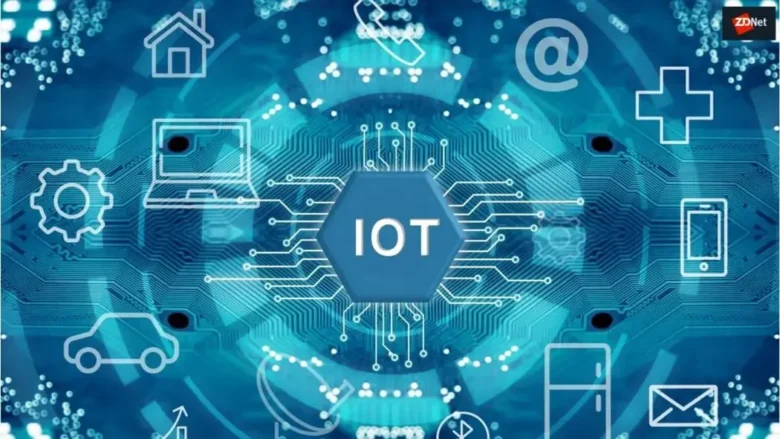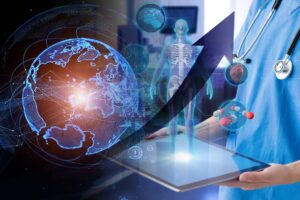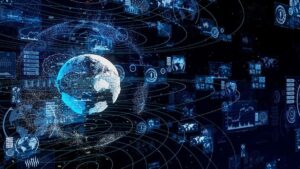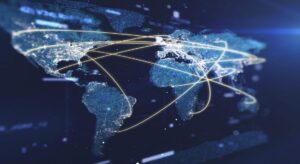The Internet of Things (IoT) has rapidly evolved from a futuristic concept to an integral part of our daily lives, impacting every aspect of them. The IoT is building a new digital architecture that encompasses countless industries and lifestyles. It began with smart homes with connected thermostats and lighting systems, and is eventually expanding to smart industrial tools and wearable fitness trackers. The power of the IoT lies in its ability to seamlessly connect devices, collect valuable data, and improve efficiency in ways that were unimaginable just a decade ago. Today, billions of connected devices are transforming the way we work, live, and use technology.
The IoT isn’t just about simplifying things; it’s about making systems more sophisticated, enabling them to anticipate needs, optimize resources, and inspire new ideas. The IoT will be one of the 21st century’s most disruptive forces as more people, businesses, and governments connect.
How the IoT Works:
What is the IoT? The IoT is a network of real-world objects equipped with sensors, software, and other technologies that connect to the internet and share information. Unlike standard devices that simply process information, IoT devices can communicate with each other and act autonomously based on the data they receive. Imagine a smart refrigerator that keeps track of your groceries and automatically orders milk when it runs out.
Or a watch you wear that monitors your heart rate and immediately contacts your doctor if it detects an irregular heart rhythm. The Internet of Things (IoT) distinguishes itself from previous waves of technological advancement by seamlessly integrating hardware and digital intelligence. By connecting the physical and digital worlds, the IoT enables us to leverage real-time data, reduce waste, and deliver personalized experiences to everyone at scale.
The Rise of Connected Devices Worldwide:
The number of connected devices is growing at an astonishing rate. Recent industry data indicates that there are well over 15 billion IoT devices worldwide. This number is expected to exceed 29 billion by 2030. More advanced connectivity methods (like 5G), improved data analytics, and now even more affordable smart monitors are driving this growth. The objects we use every day, such as cars, tools, and even clothing, are now connected. Businesses are using IoT to improve supply chains, monitor equipment in real time, and plan maintenance needs in advance.
For consumers, the Internet of Things (IoT) is increasingly becoming a part of everyday life, with smart home devices and wearable technology becoming standard features. The rapid growth of connected devices is transforming the economy, enabling the emergence of new business models, and fostering an ecosystem where data drives decision-making across all sectors.
How IoT Is Being Used in Business and Daily Life:
The IoT has a wide range of applications and continues to grow. These applications span both residential and commercial sectors. IoT connects heating, lighting, and security systems in everyday homes, enabling smartphone control. Health and fitness wearables can monitor your health in real time, enabling you to improve your lifestyle and providing doctors with valuable health information. The IoT is transforming the way businesses operate, making factories smarter and enabling devices to communicate with each other, increasing efficiency and reducing downtime.
IoT-based tracking systems help the logistics sector monitor shipments in real time, and smart farming tools are being used on farms to monitor weather, soil conditions, and crop health. Through smart city initiatives, many cities are also using IoT to address traffic congestion, reduce energy consumption, and improve community safety. These diverse applications demonstrate that the potential of the Internet of Things is no longer limited to a single industry but is quickly becoming a key component of daily life and economic growth.
Advantages and Disadvantages of the Internet of Things:
The Internet of Things undoubtedly offers many benefits, including increased efficiency, lower costs, real-time information, and greater operational convenience. Businesses can reduce downtime, anticipate disruptions, and offer more personalized services. People can live smarter, with automated routine tasks and improved healthcare outcomes through continuous monitoring. The Internet of Things can help governments manage infrastructure, save energy costs, and provide better services to citizens.
However, these opportunities also present pressing challenges. Security remains a major concern, as billions of connected devices offer more opportunities for hackers to exploit. Another significant issue is the collection, sharing, and use of personal data. Moreover, the vast amount of data generated by the Internet of Things requires sophisticated systems to properly process and analyze it. Different devices and standards can struggle to interact with each other. Although the advantages of the Internet of Things surpass its challenges, we must tackle these issues to ensure its continuous, secure, and sustainable growth.
Conclusion:
The Internet of Things will revolutionize the way we live, work, and interact with technology. With billions of devices already connected and many more on the horizon, the Internet of Things is ushering in an unprecedented era of intelligence based on data and connectivity. The applications of the IoT are vast, encompassing everything from smart homes and wearables to advanced industrial robots and smart green cities. It is demonstrating its potential across all sectors of society.
Security, privacy, and data management remain crucial issues, but new technologies and regulations are gradually addressing them. As the IoT continues to evolve, it has the potential to transform business models, improve people’s lives, and fuel economic development. More and more devices are connecting to the internet. This is not just a technological trend but a significant force transforming the future of our digital world.
FAQs:
1. Can you provide a concise definition of the Internet of Things?
The Internet of Things refers to a collection of physical objects, such as machines, devices, and appliances, that are connected to the internet and can share and collect information.
2. How many IoT devices are there today?
By 2025, there will be more than 15 billion IoT devices worldwide. This number is expected to nearly double by 2030.
3. What are some practical applications of the IoT?
For instance, we can consider smart home devices like thermostats and security systems. Other applications include wearable fitness trackers, connected cars, and smart farming tools.
4. Why is the Internet of Things vital for businesses?
By providing real-time information, the Internet of Things helps businesses improve productivity, reduce costs, provide a better customer experience, and make more informed decisions.
5. Why do you think the Internet of Things is difficult to use?
The biggest challenges facing the Internet of Things include issues with data protection and privacy, ensuring communication between devices, and managing the resulting large amounts of data.




